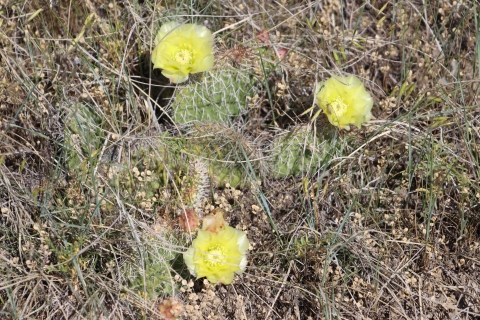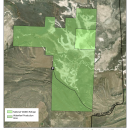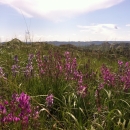Visit Us
Hailstone National Wildlife Refuge is one of four satellite National Wildlife Refuges in central Montana managed by the Charles M. Russell National Wildlife Refuge Complex and that resides within the Charles M. Russell Wetland Management District. It is jointly managed together with Hailstone Waterfowl Production Area together as one unit. Information on Hailstone Refuge can be found in the "About Us" page. The Refuge is open to hunting, wildlife observation, and photography. In addition to compliance with all applicable State hunting regulations, non-toxic shot must be used to harvest waterfowl and upland game birds.
What to Bring
Binoculars, a backpack, and water are all essential items to bring any time you venture out to recreate on any public land. Additional helpful items are boots to protect your feet from prickly pear cactus, weather-appropriate gear, and bug repellant for the seasonally plentiful mosquitoes found on the Refuge units.
General Travel
As with traveling in any remote area, please keep emergency supplies, a full spare tire, and an eye out for changing weather or roads conditions in order to stay safe while enjoying these places. No off-road mechanized travel is permitted and is prohibited by federal law. Please stay on established routes and roads.
Activities
Activities on Hailstone National Wildlife Refuge range from wildlife viewing, to hunting permitted species in season, to landscape and wildlife photography.
Please see the "Rules and Policies" section of this page for more information.
Related Documents
A georeferenced satellite imagery map showing Hailstone National Wildlife Refuge and Waterfowl Production Area.
Other Facilities in the Complex
Residing within the boundaries of the Charles M. Russell Wetland Management District, Hailstone Refuge is managed as part of the Charles M. Russell National Wildlife Refuge Complex. A National Wildlife Refuge Complex is an administrative grouping of two or more Refuges, wildlife management areas, or other Refuge conservation areas that are primarily managed from a central office location. Refuges are grouped into a complex structure because they occur in a similar ecological region, such as a watershed or specific habitat type, and have a related purpose and management needs. Typically, a project leader or complex manager oversees the general management of all Refuges within the complex and Refuge managers are responsible for operations at specific Refuges. Supporting staff, composed of administrative, law enforcement, Refuge management, biological, fire, visitor services, and maintenance professionals, are centrally located and support all Refuges within the complex.
The District Manager for the Charles M. Russell Wetland Management District serves as the manager for Hailstone National Wildlife Refuge.
Rules and Policies
The regulations below apply to Hailstone National Wildlife Refuge.
Locations
To access Hailstone National Wildlife Refuge, drive 4 miles east of Rapelje, MT to the Hailstone Basin Road. Turn north on this road and continue 1.5 miles to the Refuge entrance. A two-track trail crosses the Refuge from southeast to northwest. Visitors are required to park immediately adjacent to the road.








